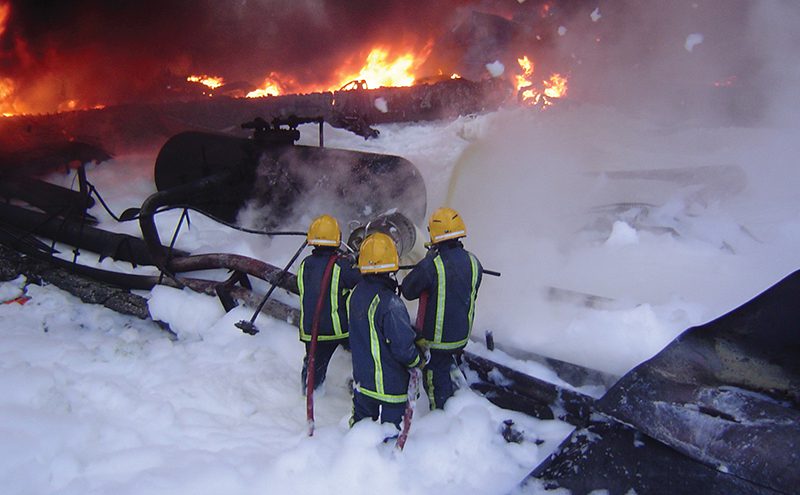The list of potentially hazardous contaminants in drinking water and the environment continues to grow. At Aqua Enviro’s European Waste Water Management Conference (EWWM) in October, Gabby Butera of built environment consultancy ARUP spoke about substances we should be concerned about but which are not yet regulated. She also discussed treatment technologies that show promise. Envirotec reports

New chemicals are always appearing in the environment, and it takes time to realise that some of them might be hazardous, and then introduce suitable regulatory limits.
Butera’s presentation drew on knowledge of her own geographical region of Australia, and compared it with efforts being made in the US, EU and UK. Her talk referenced an ARUP research project.
In the US, the EPA uses something called the unregulated contaminant monitoring rule (UCMR) to guide the collection of data on contaminants that are suspected of being present in drinking water, and for which there are as yet no health standards set under the Safe Drinking Water Act.
At any one time, around 30 contaminants will be the focus of monitoring efforts by the EPA, and this list is reviewed every five years, with some of them progressing through to the regulatory stage.
Progress in the latter respect will depend on a contaminant’s prevalence in the environment and also whether there is any technology available for its removal. In the absence of a best-available treatment option, the EPA tends to be cautious about introducing regulation.
It’s a three-stage monitoring, assessment and implementation process, similar to what goes on in Europe. “There’s a fair amount of transparency I would say in this process,” said Butera.
The EU’s Chemical Investigations Programme (CIP) follows much the same process as the first two steps of the EPA’s. And then the mechanism by which some contaminants will be considered for regulation is defined within the EU Water Framework Directive.
In Australia the process is not as clear, she said, with a number of bodies and regulatory instruments having a bearing on the question. The Department of Health oversees all areas of human health, not just water, while the State EPA looks after environmental health, with a focus on the aquatic environment. The Australian Drinking Water Guidelines (ADWG) account for “the regulations as they stand”, she said.
So it’s not clear how emerging contaminants are to be handled in Australia. “At the moment it’s in the form of internal guidelines that we’re implementing alongside our drinking water guidelines,” she said, but there’s no formal monitoring programme.
ARUP’s research project identified a “top 10” of contaminants with the most likelihood to impact the water industry, globally. The list included pharmaceuticals, steroid hormones and surfactants.
All were “highly persistent” she said. For example, the perfluorinated alkyl substances, of which there were a couple. “Every single molecule” of these substances that has ever been produced by human activity since last century is still present in the environment today, she said. And conventional wastewater treatment can’t handle any of them, so treatment innovation is an urgent matter.
The list also included hormones – the oestrogen compounds 17-estradiol (EZ), 17-ethnyl estradiol (EEZ) and estrine (E1). And a number of pesticides – alochlor, heptachlor and heptachlor epoxide – all soon to be regulated in the EU. Alochlor’s regulatory status varies noticeably from region to region – in Austrialia it’s “not even under consideration” she said, while in the US there is already a set regulatory limit.
The risks and dangers
Butera offered an overview of the dangers of each. The oestrogen compounds mentioned can all affect the endocrine system at very low concentrations – which is how they occur in the environment at present. They can impact thyroid function, insulin resistance and diminish glucose tolerance. Their impact on aquatic environments has been studied widely, and there are also a few studies assessing their effect on human health.
The pesticides are capable of quite significant harm, causing skin and eye irritations even at low concentrations. They’re a particular issue in the UK because of the predominance of open water catchment areas receiving run-off from contaminated land. Butera said these will soon be regulated in the EU at quite low residual concentrations.
Much of Butera’s talk focused on per- and polyfluoroalkyl substances, particularly perfluorooctanic acid (PFOA) and perfluorooctyl sulphonate (PFOS). These appear in water-resistant coatings present in some kitchen products, as well as in fire-fighting foams – leading to a number of high-profile land contamination cases in the US and Australia, which was also “starting to happen in the UK”.
Health risks include kidney toxicity, heightened infant mortality rates, and birth defects at high concentrations. PFOS and PFOA are also “highly persistent and mobile” contaminants, whose presence has even been detected on the borders of the Arctic circle.
High profile lawsuits have resulted from PFOA contamination of drinking water in Hoosick Falls, New York State, and Parkersburg in West Virginia. In 2016 PFOA was measured in Hoosick Falls at over 100k parts per billion, nearly 2000 times the WHO’s safe levels for human health.
A successful lawsuit was brought against DuPont following PFOA contamination from its Teflon plant in Parkesburg, which by February 2017 had reached a settlement figure of $671 million, although the firm denies any wrongdoing.
Other PFOA cases include an April 2017 incident at Brisbane airport, when 22k litres was accidentally released from a sprinkler system, entering a nearby creek.
At another location, the Katherine River in Australia’s Northern Territories, the situation is interesting, said Butera, because PFOA concentrations have remained unchanged for many years – leakage to the river has been happening since 2005 – but the acceptable health limit figures have dropped, and look set to bring the issue to the fore anytime soon.

Emerging treatments
ARUP’s study aimed to identify emerging technologies for the treatment of PFOA and PFOA, “because, at the moment, conventional is not cutting it”, and to understand the key knowledge gaps in the area.
For some of the contaminants on the list, utilities and industrial firms dealing with them can turn to established approaches like granular activated carbon, ion exchangers, reverse osmosis, and oxidation techniques. But there’s an appetite for less costly and more innovative solutions, without many of the associated problems these techniques bring.
Butera mentioned a few candidates. For example, Rembind from Ziltek, a powdered reagent. Some studies show it outperforming granular activated carbon in binding perfluorinated compounds in water. And PerfluorAd, a microflocculant product, also seemingly binds to the contaminant, allowing it to be removed via sediment filtration.
SciSor from Akadis is an interesting one, she said, because it’s not just a flocculant and not just an absorption material, “it can actually break down these PFOS and PFOA contaminants during chemical oxidation”.
Despite their availability, the lack of long term data about these methods, establishing their success in fulfilling their claims, means that the industry is cautious about using them.
Butera’s talk also dealt with innovative methods so far only demonstrated at bench scale. One of these involved the use of carbon nanotubes and a quartz binder – the super-high porosity of the material greatly increases the number of binding sites, allowing it to perform with much higher efficiency than absorption on granular activated carbon.
Another “interesting one” they encountered in the study was an aerosol-mediated separation technology, where PFOS and PFOA attach to bubbles which rise to the surface of the solution, which can be scraped off with high efficiency while producing only a low volume of waste products.
Known unknowns
Many of these treatment methods – both the established and emergent ones – seem to produce waste products, she said, “and there’s not a lot of knowledge in the industry about what you can and cannot do with that waste product”. This “leaves the industry in a sticky place”, she said, because, for example, it means that at sites where PFOS contamination has been treated, the residue – the mix of contaminated material and treatment medium – must remain on site until some future date when the regulatory authorities can decide what you’re allowed to do with it.
By-products from the treatment methods was also an issue. Various studies investigating oxidation technologies, such as those used to treat some of the hormones and pharmaceutical contaminants mentioned in the talk, have shown that they can produce harmful by-products, some with the potential to be even more dangerous than the target contaminants.
It means that if these secondary toxic substances become regulated in the future, your choice of remediation technology could leave you back at “square one”.
Butera finished off with a slide, an advert from the mid-20th century for a certain popular building material whose toxicity was to become notorious later. Would we look back, she wondered, in 50 years time, at the list of contaminants with which this talk had dealt, and ask ourselves “was this the asbestos of 2017”?






